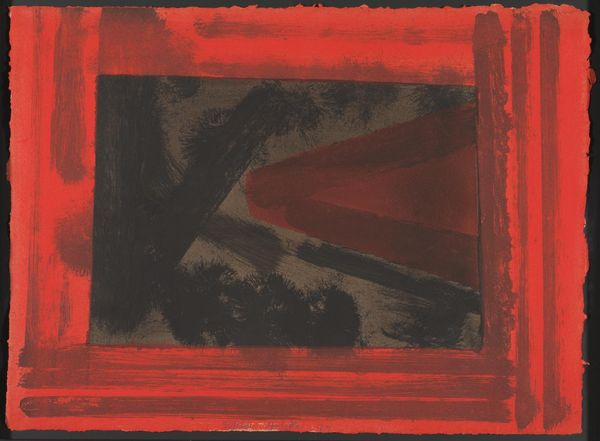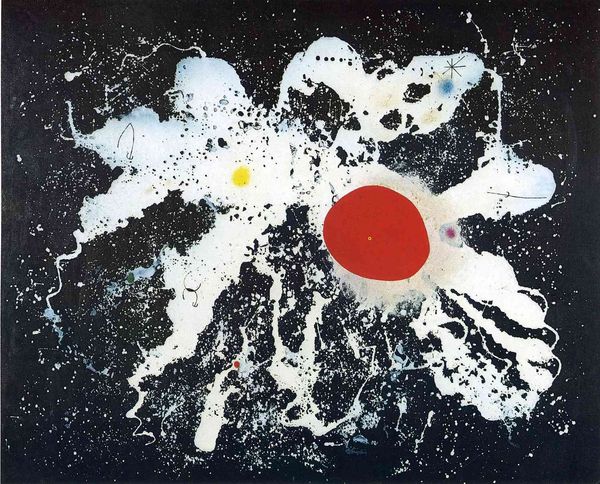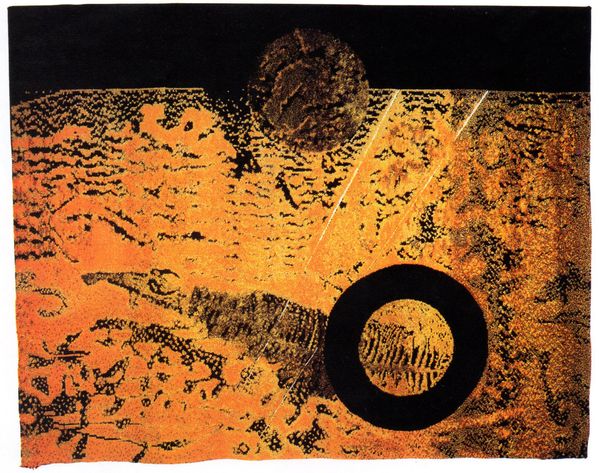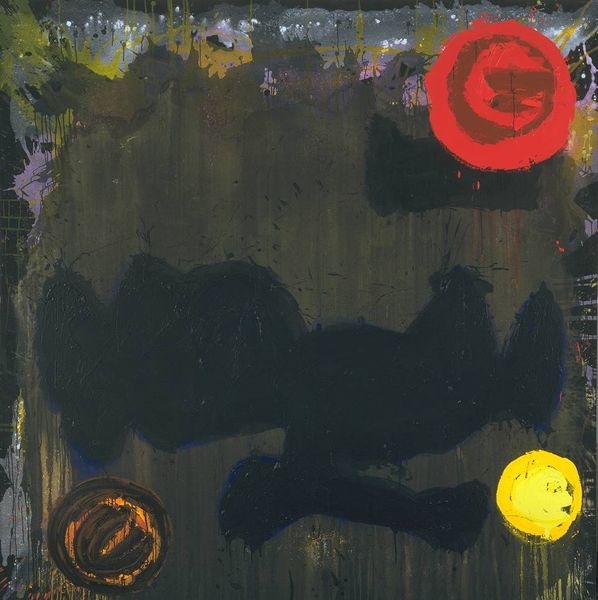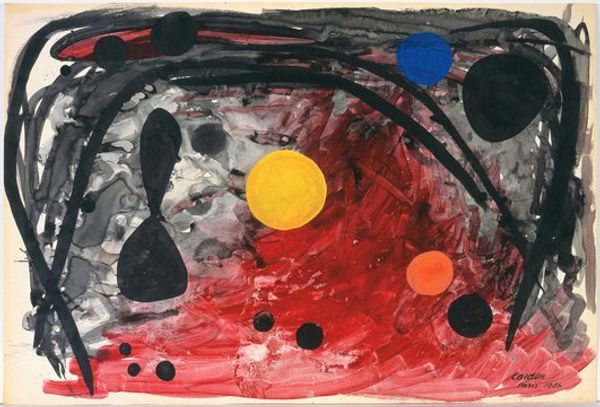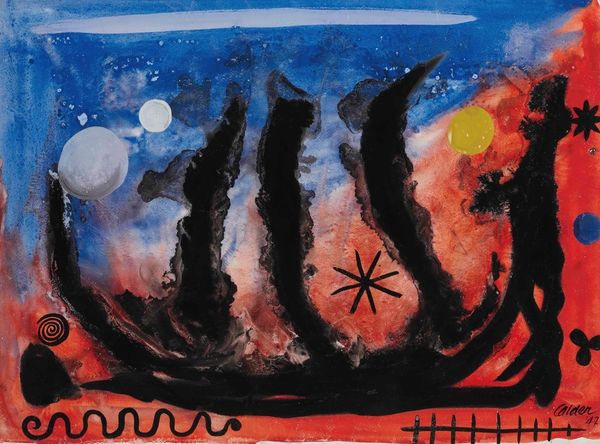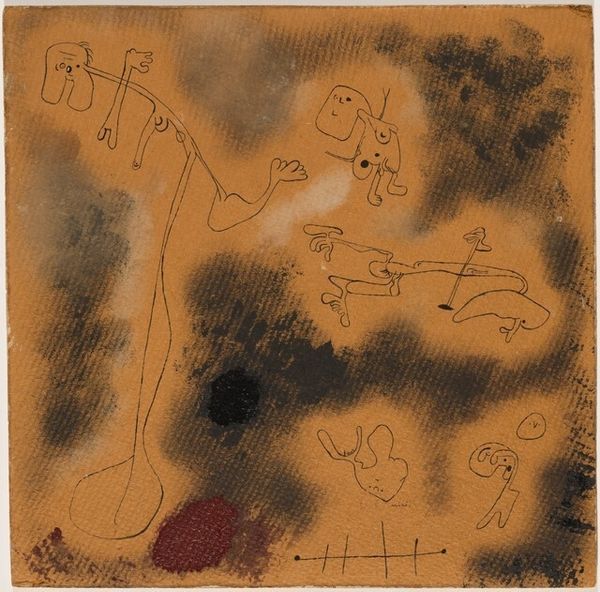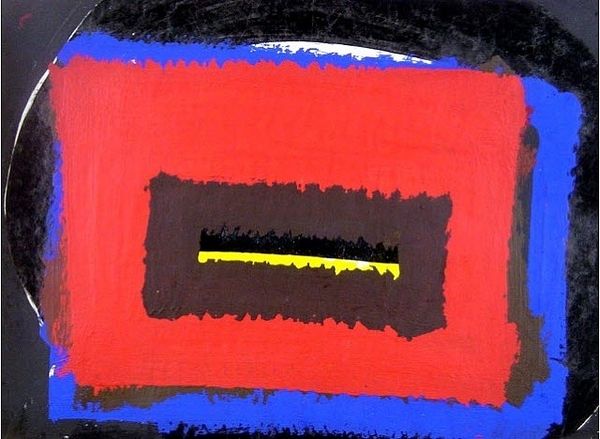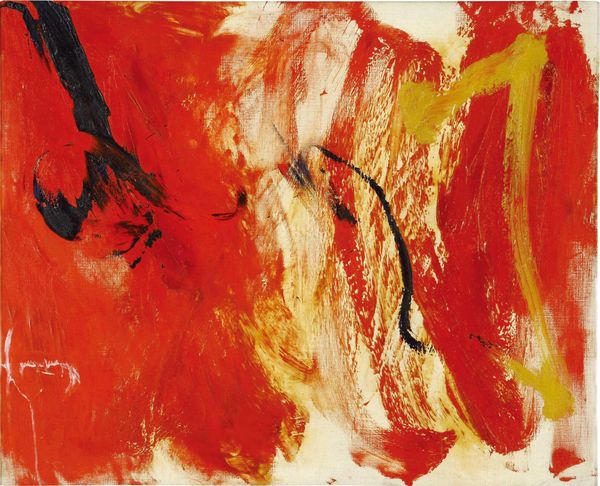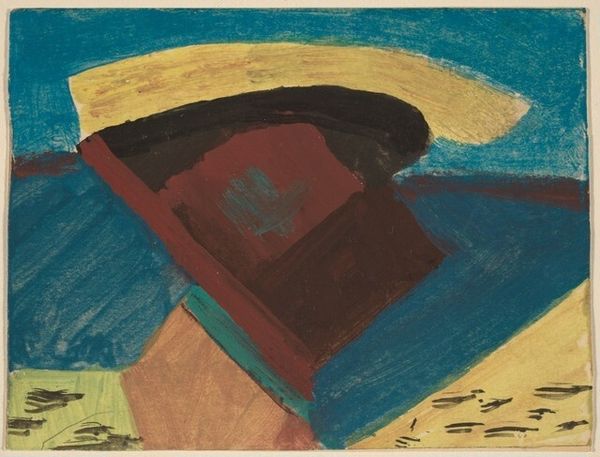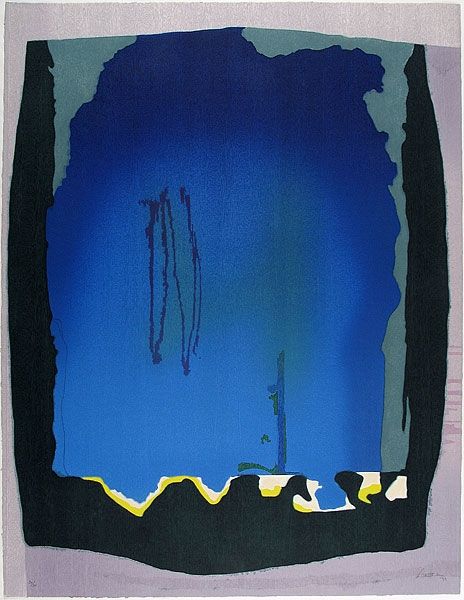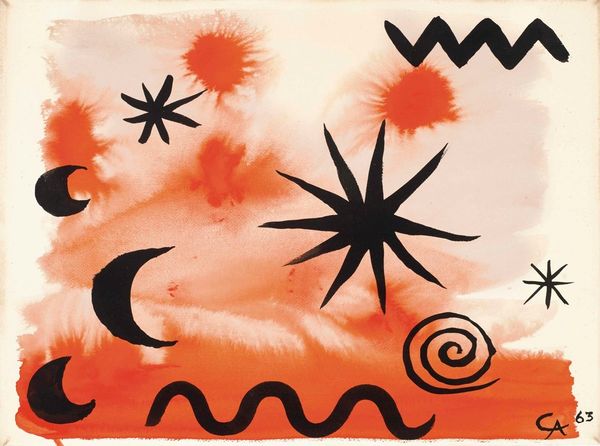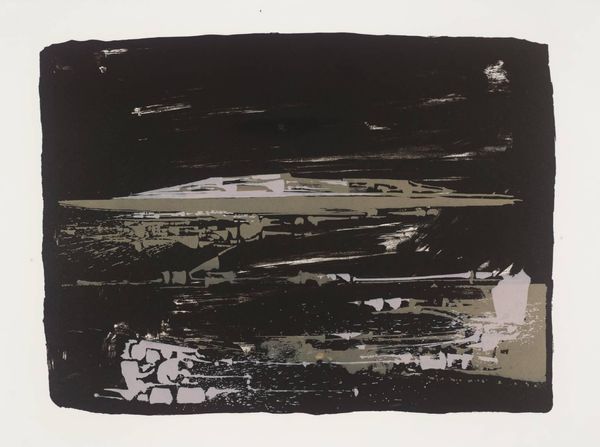
Copyright: Forrest Bess,Fair Use
Curator: Editor: Okay, here we have Forrest Bess's "Prophecy" from 1946, done with oil and acrylic paints. It’s a very stark, somewhat unsettling landscape. The materials look roughly applied, and the composition is strangely divided into bands of color. What catches your eye about this work? Curator: It’s compelling how Bess wrestled with materiality to give form to his inner world. Notice the tangible quality of the paint itself; the texture, the layering. How does this direct manipulation of materials speak to the historical moment of post-war anxiety and spiritual seeking? What kinds of labor went into it? Editor: It feels like the very act of painting was part of Bess’s process. The heavy layers create a palpable tension, right? I’m also curious about his use of the materials at hand. I guess the effect he's achieving feels far removed from a polished academy painting! Curator: Precisely! It seems Bess sought an authentic visual language, maybe through the ‘handmadeness’ of the painting and paint quality? Think about this in the context of his hermetic lifestyle, and his explorations in self-surgery as a method of unlocking artistic potential... do you see these ideas embedded in the physical facture of this artwork? Editor: I hadn’t made that connection. Thinking about the social context makes this "prophecy" feel deeply personal, even desperate. Maybe the painting *is* the prophecy, brought to life through his very specific actions and materials. Curator: It moves beyond the surface then. Bess' "Prophecy" provides insight into materiality, and connects process, product and lived experiences in a profoundly interwoven way. Editor: This has definitely reshaped my understanding; I’ll look more closely at how artists’ life circumstances and available materials deeply informs their art!
Comments
No comments
Be the first to comment and join the conversation on the ultimate creative platform.
